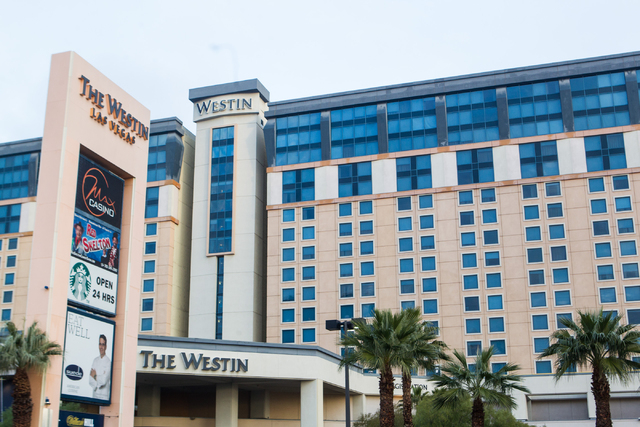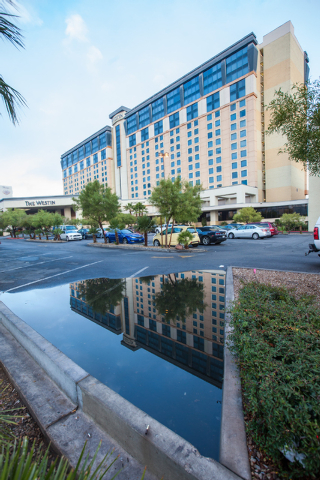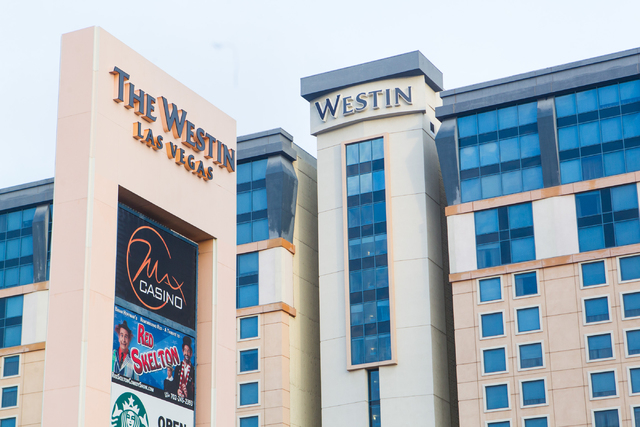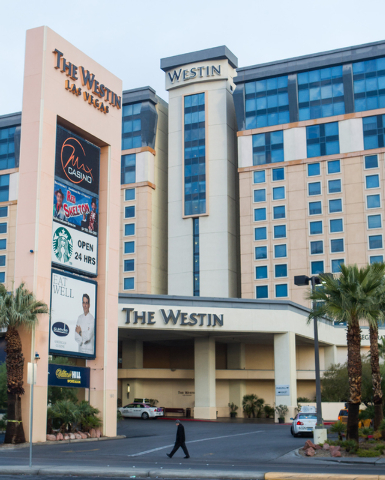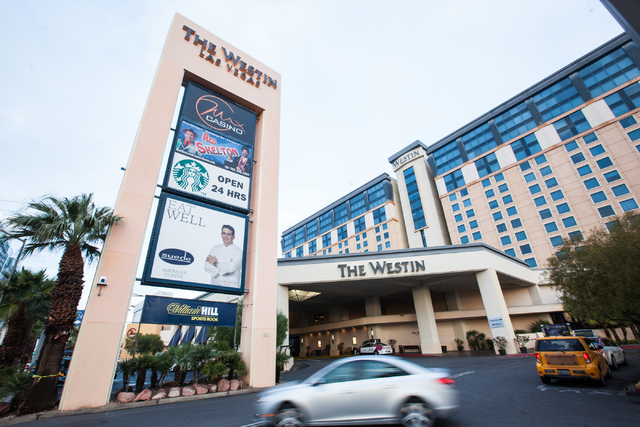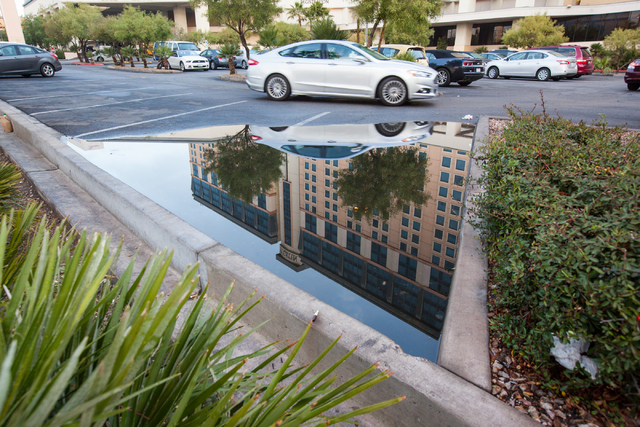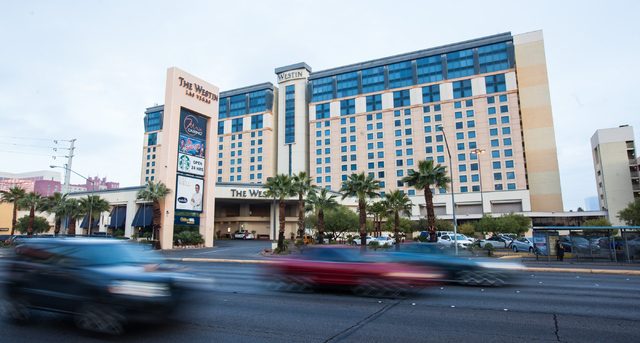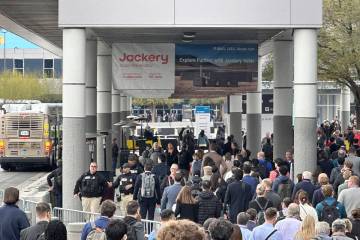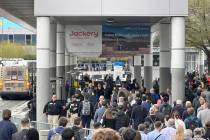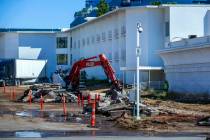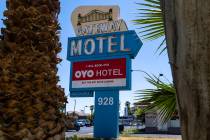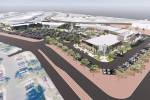Healing seen in Las Vegas commercial real-estate market
Southern Nevada’s homes market isn’t the only real estate sector seeing falling loan delinquencies.
An improving economy means fewer commercial borrowers are in danger of default, too.
New numbers from Trepp, a New York-based commercial real estate and banking research firm, show a substantial drop recently in late commercial loans. The Las Vegas Valley in December had 53 properties with real estate loan payments that were more than 90 days late, for a 10.7 percent delinquency rate. That was down from 14.9 percent in December 2013.
It was also less than half of the rate in mid-2011, when 24 percent of local commercial properties were behind on their real estate loans, said Sean Barrie, a Trepp research analyst.
Nearly 150 local properties were delinquent in mid-2012.
Delinquencies are an important economic indicator because they reflect whether commercial landlords can make their payments. That’s driven in turn by economic expansion and business formation.
Delinquencies are falling as more borrowers and banks look for loan-workout strategies, Barrie said.
Those alternatives to default are available because the local market has stabilized, said Bob Ybarra, an analyst with commercial brokerage CBRE Las Vegas.
“You’re seeing a lot more absorption (leasing of space) in industrial, office and retail properties,” Ybarra said. “The overall fundamentals are better: You have a strong economy, businesses are rebounding, there’s more job creation, and there’s more wealth. We’re not breaking records, but some of these centers are starting to fill up with tenants again. And when they fill up, the landlords can service their debt.”
SHARP SWING IN LEASING
New numbers from CBRE Las Vegas show how dramatically leasing has swung in the recovery.
Net absorption of local office space has totaled about 3 million square feet since 2012. That’s compared with negative absorption, or loss of leased space, of 1.8 million square feet from 2009 through 2011. Office vacancies in the fourth quarter were still high, at 21.2 percent, but that was down from 27 percent in the downturn.
Industrial absorption was 2.8 million square feet in 2014, up 17.3 percent over 2013’s rate. The submarket posted net absorption of 5.2 million square feet in 2013 and 2014, compared with 3.1 million square feet of negative absorption from 2009 to 2012. Industrial vacancy averaged 7.3 percent, down from 10.2 percent a year earlier.
The swing in absorption rates hasn’t been as dramatic in retail, because the sector wasn’t as hard-hit. But vacancies continue to trend down as tenants fill space. Retail vacancy averaged 10.4 percent in the fourth quarter, down from 11.5 percent in the fourth quarter of 2013 and well below a 2011 high of 14.1 percent.
Delinquencies varied by submarket. The office sector had 22 properties with late loans in December. Industrial had four. Retail had 17. There were also seven multifamily properties and three lodging properties with loans that were late by 90 days or more.
On top of improved cash flow from new tenants, credit markets have loosened, Ybarra said. That means more access to bridge lenders who can help property owners with refinancing. There are also more investors willing to gamble on the local market.
“During the downturn, there was very little activity here because everyone had a big, red ‘X’ across the state,” Ybarra said. “Now, people are willing to lend in Las Vegas. There are more investors people can go to to give up equity in their property as well.”
STILL OUTPACING NATIONAL LEVEL
The news wasn’t all good.
Southern Nevada’s default rate continued to outpace the national level.
December’s nationwide delinquency reading of 5.75 percent was about half of Southern Nevada’s rate.
That was also the case during the recession: When the local rate hit 24 percent in July 2012, the national rate was 10.24 percent.
The largest local commercial loans more than 90 days late include: the Westin Casuarina Hotel on East Flamingo Road, with a loan balance of $136.5 million; hotel Loews Lake Las Vegas, with a balance of $117 million; Sahara Pavilion North, a shopping center at Decatur Boulevard and Sahara Avenue, which has a balance of $56.3 million; Entrata di Paradiso Apartments, at 2701 N. Rainbow Blvd., which carries a $39 million balance; and Rainbow Promenade, a shopping center at North Rainbow Boulevard and Smoke Ranch Road, with $37.9 million in loans outstanding.
The Westin Casuarina entered foreclosure in 2010 after then-owner Columbia Sussex Corp. stopped making payments on the property’s $160 million mortgage. A court appointed Pyramid Hotel Group its receiver; Pyramid leased the property’s casino to 777 Gaming beginning in 2012.
Pyramid also manages the Loews property, which opened as the Hyatt Regency in 1999 and switched to the Loews brand in 2006. The property has been in receivership since 2009, when it defaulted on its $117 million mortgage. It switched to the Westin brand in 2012.
The 333,000-square-foot Sahara Pavilion North has been in default since February 2011, while the 228,000-square-foot Rainbow Promenade has been in arrears since November 2012.
Observers said commercial delinquencies should continue to fall through 2015.
Barrie said the Las Vegas rate should tick down as the national rate does, though he added that it would be difficult to forecast another four-percentage-point drop.
Ybarra said it’s hard to predict default rates, but he said he anticipates an even better year ahead for local commercial real estate. Economic “fundamentals” should continue to improve, he said. For example, dropping gasoline prices will mean more discretionary income for consumers, which in turn will help the retail sector grow and further cut real estate vacancies.
Contact Jennifer Robison at jrobison@reviewjournal.com. Find her on Twitter: @J_Robison1



